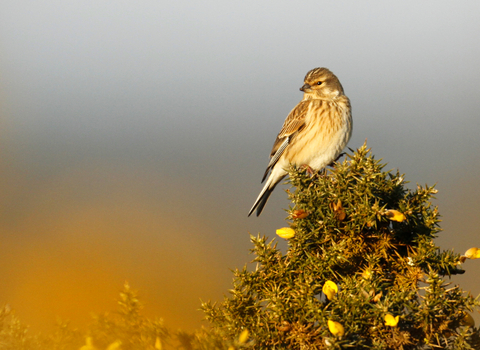
©Jon Hawkins

©Terry Whittaker/2020VISION
Linnet
The linnet can be seen on farmland and heathland across the UK. But, like so many other farmland birds, linnets are declining rapidly, mainly due to agricultural intensification.
Enw gwyddonol
Linaria cannabinaPryd i'w gweld
January to DecemberGwybodaeth am rywogaethau
Categori
Ystadegau
Length: 14cmWingspan: 24cm
Weight: 19g
Average lifespan: 2 years
Classified in the UK as Red under the Birds of Conservation Concern 5: the Red List for Birds (2021). Protected in the UK under the Wildlife and Countryside Act, 1981. Priority Species under the UK Post-2010 Biodiversity Framework.
